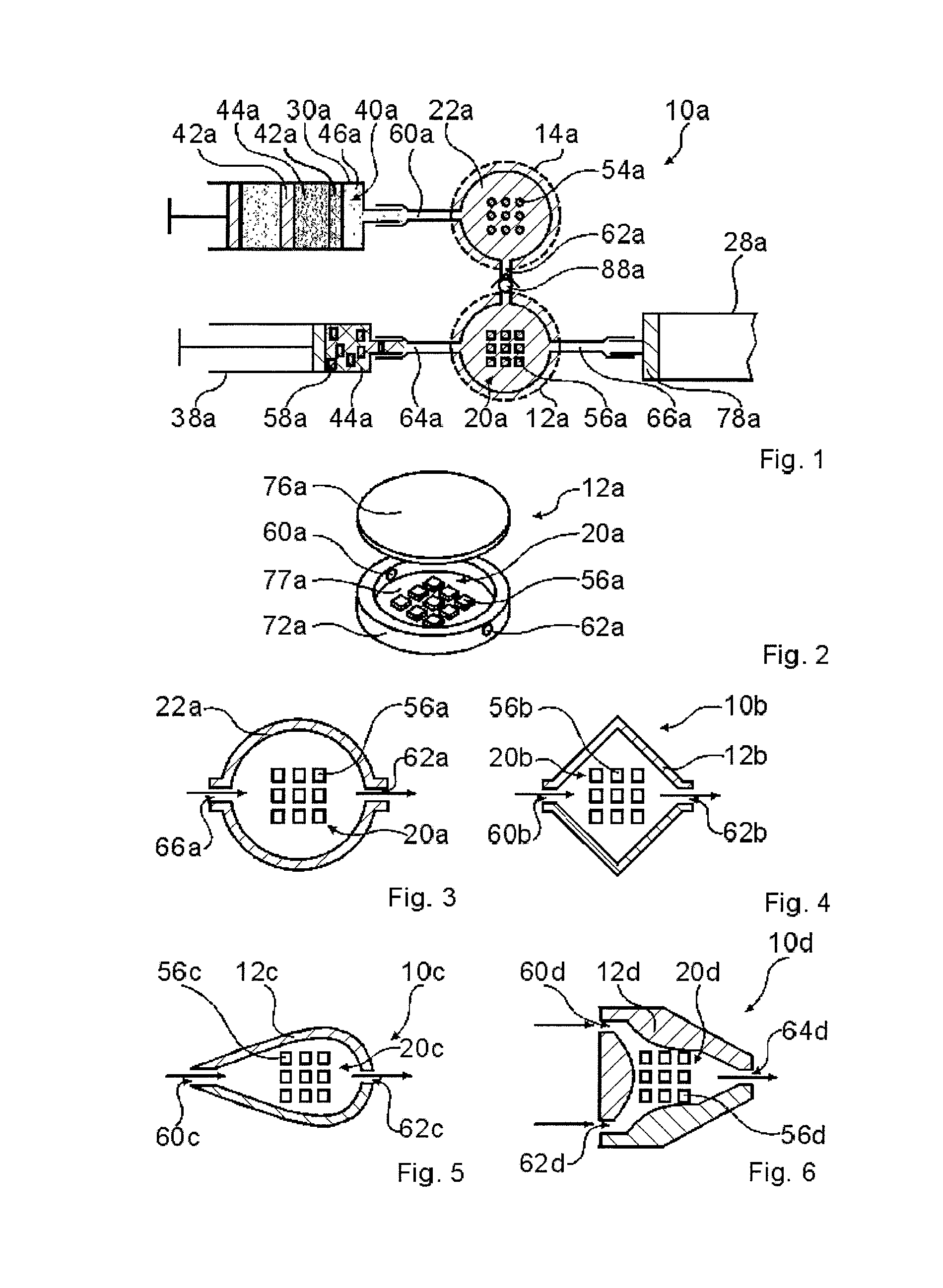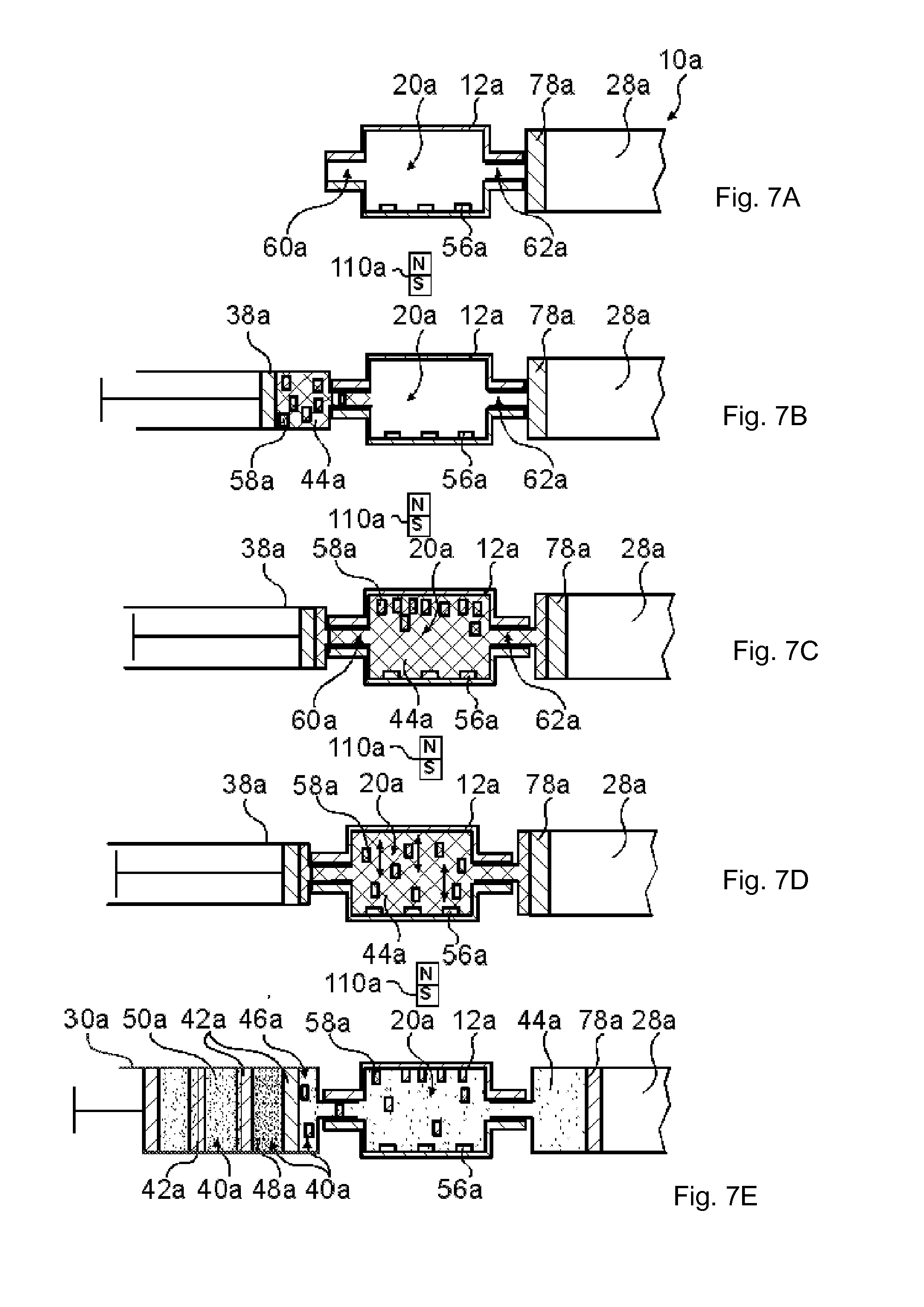Device for performing a biochemical analysis, especially in outer space
- Summary
- Abstract
- Description
- Claims
- Application Information
AI Technical Summary
Benefits of technology
Problems solved by technology
Method used
Image
Examples
Example
[0063]FIG. 1 shows a top view of a device 10a according to the invention for performing a biochemical analysis, formed by an immunoassay, in outer space, in which analysis an analyte in a sample 44a is determined selectively, having two reaction containers 12a, 14a which have in each case a work volume 20a, 22a which are intended for taking in a liquid volume and for performing at least one substep of an analysis reaction, and having four interfaces 60a, 62a, 64a, 66a which are intended for connecting at least the two work volumes 20a, 22a to one another and to three further media containers 28a, 30a, 38a. The interface 62a between the work volumes 20a, 22a has a valve 88a for preventing backflow from the work volume 20a into the work volume 22a. The reaction containers 12a, 14a are implemented as vessels which are substantially completely closed in the assembled state and which are only accessible via the interfaces 60a, 62a, 64a, 66a. The work volumes 20a, 22a are designed for rea...
PUM
 Login to View More
Login to View More Abstract
Description
Claims
Application Information
 Login to View More
Login to View More - R&D
- Intellectual Property
- Life Sciences
- Materials
- Tech Scout
- Unparalleled Data Quality
- Higher Quality Content
- 60% Fewer Hallucinations
Browse by: Latest US Patents, China's latest patents, Technical Efficacy Thesaurus, Application Domain, Technology Topic, Popular Technical Reports.
© 2025 PatSnap. All rights reserved.Legal|Privacy policy|Modern Slavery Act Transparency Statement|Sitemap|About US| Contact US: help@patsnap.com



